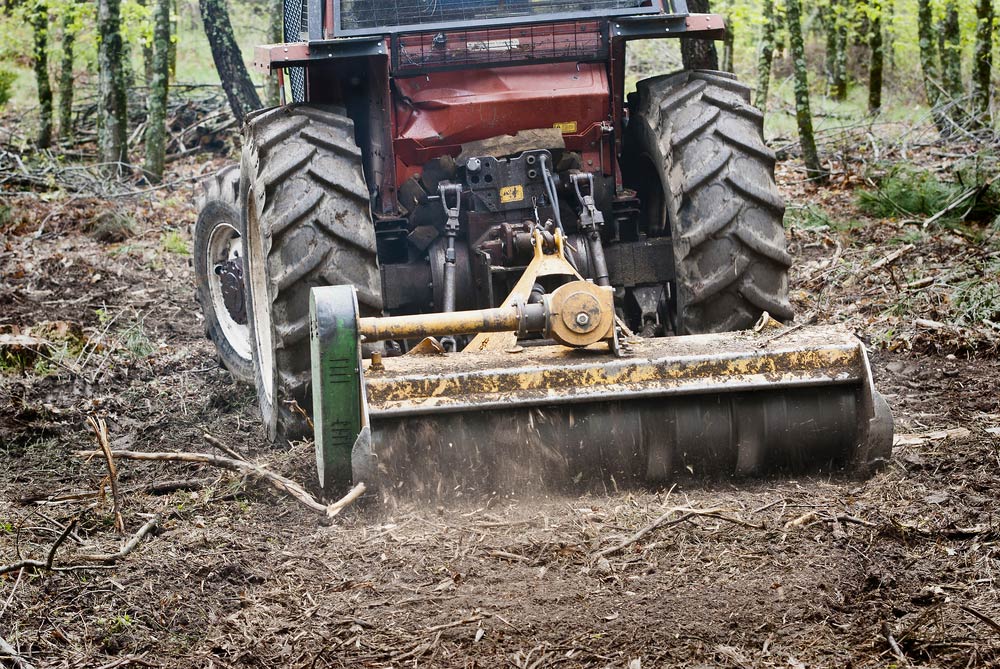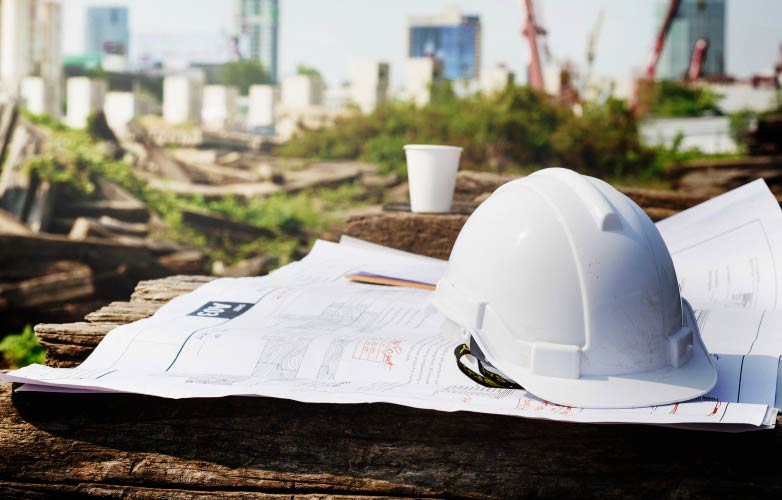Municipal land management is a continuous responsibility that directly influences public safety, urban aesthetics, and the usability of community spaces. City and county governments must care for a wide variety of sites including roadside verges, parks, sports fields, nature reserves, trail systems, watercourse banks, and green buffer zones. These spaces must remain safe, visually appealing, and accessible year-round, which means vegetation control is a central part of municipal operations.
The challenge for municipal teams is to maintain large and diverse areas under tight budgets, strict regulatory frameworks, and increasing environmental expectations from the public. Heavy-duty mulchers have become a strategic solution for many municipalities, as they combine vegetation clearing and processing in a single pass. This reduces the need for multiple machines, speeds up operations, and keeps environmental disturbance to a minimum.

Municipal land managers face the challenge of keeping diverse public spaces safe, functional, and visually appealing throughout the year. These areas range from shaded park edges and riverside paths to wide-open sports fields and road verges exposed to heavy traffic.
Each environment presents unique vegetation management challenges, yet municipal budgets and crew sizes are often limited. This is where heavy-duty mulchers offer a major advantage. Their ability to handle a wide spectrum of clearing tasks without the need for multiple machines or specialist teams transforms how cities and counties approach maintenance.
By consolidating operations into a single, adaptable process, municipalities can achieve faster results, reduce operational costs, and keep public spaces consistently ready for use.
Heavy-duty mulchers can process everything from fine brush to mature trees in a single pass, making them ideal for municipalities that need to handle multiple landscape types within tight schedules. This versatility means they can transition seamlessly between maintenance tasks without costly equipment changes.
They are particularly effective for:
By relying on one machine for all these operations, municipalities can significantly reduce their fleet size, streamline operator training, and cut down on storage and maintenance expenses. This also enables crews to move quickly from one task to another, for example, removing overgrown grass verges in the morning, then opening up a blocked riverside trail in the afternoon, without the downtime associated with swapping out equipment.
In municipal environments, unmanaged vegetation is more than just an eyesore. It can hide road signs and signals, block the view of drivers and pedestrians, restrict emergency vehicle access, and create fuel loads that increase fire risks in certain areas. Local and regional regulations require municipalities to address these issues proactively, often setting strict guidelines for visibility, access, and environmental safety.
Heavy-duty mulchers make it easier to meet these legal and safety requirements by:
Incorporating mulching into a structured maintenance schedule allows municipalities to maintain compliance year-round while improving the overall appearance and usability of their public spaces. It also ensures vegetation is controlled in a way that supports environmental stewardship, since mulching leaves an organic layer that can help retain soil moisture and reduce erosion. For regulatory alignment, reference OSHA and ANSI mulcher safety standards.
Municipal vegetation management is rarely straightforward. Crews often work under tight deadlines, unpredictable weather conditions, and diverse terrain that can range from steep embankments to delicate parkland. At the same time, they must comply with stringent safety protocols and environmental regulations, especially in areas frequented by the public.
Heavy-duty mulchers are designed with these realities in mind. Their engineering allows for both the power needed to process dense growth quickly and the precision required to operate in sensitive environments without causing collateral damage. This combination of strength and control makes them an indispensable asset for municipal operations in urban, suburban, and rural landscapes alike.

One of the greatest advantages of heavy-duty mulchers is their ability to cut, shred, and distribute vegetation in a single continuous process. By combining these steps into one operation, they eliminate the need for separate chipping, hauling, or burning, which not only saves time but also reduces costs associated with multiple machines and additional crews.
The key efficiency benefits for municipalities include:
This streamlined approach means municipalities can meet tight maintenance schedules without extending project timelines or allocating extra resources. Faster turnaround also improves public satisfaction, as residents experience minimal disruption to parks, roads, and recreational areas.
By maximizing output while minimizing equipment use, heavy-duty mulchers help municipal teams achieve more with less, freeing up both time and budget for other community improvement projects.
Not all municipal spaces can withstand aggressive clearing methods. Urban parks, heritage sites, nature reserves, and riverbanks require a level of care that goes beyond simply removing vegetation. These areas often hold ecological, cultural, or historical significance, and preserving their integrity is as important as maintaining their functionality.
Heavy-duty mulchers excel in such environments thanks to their precision cutting capabilities and minimal ground disturbance.
Their design allows operators to:
This adaptability empowers municipal crews to operate in high-traffic public spaces, around historic monuments, and along ecologically sensitive waterways with full confidence that their work will enhance safety and accessibility while respecting conservation priorities. For cutting discipline that preserves surfaces and sightlines, see strategic cutting patterns.
By balancing performance with preservation, heavy-duty mulchers allow municipalities to maintain spaces that are not only safe and functional but also visually appealing and environmentally responsible.

Running a successful municipal mulching program involves more than simply bringing machinery on site and clearing overgrowth. It requires a methodical approach that begins with detailed planning, continues through careful execution, and is followed by ongoing monitoring to ensure lasting results.
This structured process not only maximizes the efficiency of operations but also ensures that the cleared areas remain safe, visually appealing, and compliant with regulatory standards long after the initial work is done.
Thorough preparation is the foundation of an effective municipal mulching project. Before equipment is mobilized, teams should conduct a comprehensive site assessment that evaluates vegetation density, terrain conditions, safety hazards, and any environmental constraints such as protected habitats or watercourse buffer zones.
Key planning steps that help optimize municipal mulching projects:
By investing the time to prepare thoroughly, municipalities reduce the risk of delays, avoid costly errors, and ensure that crews and equipment are deployed as efficiently as possible. This planning stage also allows for coordination between different municipal departments, such as public works, parks, and environmental services, so that all priorities are addressed in a single, streamlined operation. For step-by-step prep, see pre-operation checks.
Mulching delivers immediate results, but vegetation will inevitably regrow. Without a consistent maintenance schedule, overgrowth can return quickly, undoing the benefits of the original clearing and potentially creating new safety hazards. For this reason, municipalities should integrate mulching into a long-term vegetation management strategy rather than treating it as a one-off intervention.
Best practices for ongoing municipal mulching:
A disciplined maintenance routine ensures that public spaces remain open, safe, and visually appealing throughout the year. It also protects the municipality’s initial investment in mulching by extending the benefits of each clearing cycle, reducing the need for large-scale remedial work in the future. Use simple, auditable maintenance checklists to keep teams aligned across shifts.
When executed with proper planning and consistent follow-up, municipal mulching becomes a sustainable, cost-effective, and environmentally responsible way to manage public spaces, from busy urban streetscapes to rural recreational trails.
“Municipal mulching is about more than cutting back growth, it is about creating safer, cleaner, and more welcoming public spaces for everyone.”

Municipal vegetation management is not simply about keeping public spaces clear and attractive, it is also a highly regulated activity with strict safety and environmental requirements. Public works projects are conducted under close scrutiny, as they directly impact community safety, infrastructure reliability, and environmental integrity.
Whether mulching takes place alongside busy highways, in school playgrounds, or near residential neighborhoods, it must be executed with meticulous attention to both operational safety and legal compliance.
Any oversight can lead to accidents, service disruptions, or costly legal repercussions, making robust safety and regulatory practices a non-negotiable element of every municipal mulching project.
Protecting the well-being of both workers and the general public is the first priority during any municipal mulching operation. This is especially important in high-traffic or high-visibility areas, where work zones often exist just meters away from pedestrians, cyclists, and vehicles.
To ensure safe conditions throughout the project, municipal crews should implement the following best practices:
By adhering to these measures, municipalities greatly reduce the risk of injury, prevent accidents caused by public intrusion into work zones, and keep projects running on schedule without avoidable interruptions.
In addition to safety, municipal mulching operations must comply with a range of environmental protection laws, local ordinances, and public works standards. These regulations are designed to safeguard biodiversity, protect infrastructure, and ensure that vegetation management practices are sustainable over the long term.
To remain fully compliant and maintain public trust, municipal teams should:
Following these guidelines not only protects the natural environment but also demonstrates that municipal vegetation management is carried out responsibly and in alignment with the community’s values. This commitment to transparency and environmental stewardship strengthens public confidence in local governance and ensures the municipality can continue to operate without regulatory obstacles.
If your municipality needs reliable vegetation control that balances safety, efficiency, and environmental care, our heavy-duty mulcher services provide the solution. We help cities and counties maintain public spaces to the highest standards while keeping costs under control. Contact us to discuss your maintenance needs and request a tailored quote.
To provide the best experiences, we use technologies such as cookies to store and/or access device information. Consenting to these technologies will allow us to process data such as browsing behavior or unique IDs on this site. Failure to consent or withdrawing consent may adversely affect certain features and functions.